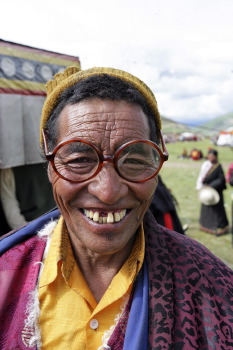Some researchers have spoken of a ‟geography of the smile.” By examining photographs found on 2000 pages of social networks in Europe, they found that, on these photographs, 55% of the British smiled, against only 25% of Poles and Hungarians. These figures do not necessarily mean that the people of Eastern Europe are less open to their peers. According to P. Svarota, the author of this study, Polish society values highly unaffectedness and believe that it is inappropriate to disguise one’s feelings behind contrived facial expressions.
Moreover, the idea that it is desirable to harbor a constant smile, whether sincere or not, quickly lead to offer nothing more that ‟Pan Am” smiles, thus named after the advertising of the defunct airline on which models, men and women, use to wear a rigid smile, expressed only by the lips and not the entire face.
The idea that we must smile at all costs is very Western. In the West, people tend to smile automatically in front of a camera and it seems desirable to always give the impression of being happy. In Asia (Tibetans, Indians, Nepalese, Sinhalese, etc..), most often when people are photographed, they take a very serious pose. Tibetans, for example, smile and laugh a lot, perhaps more than any other people that I had the opportunity to befriend. But if you take a picture of a Tibetan, usually he will instantly freeze in a grave expression, which seems to him to be more suitable to be fixed for posterity.

It is not very difficult, however, to melt away their seriousness and turn it into a big smile. Usually, when doing a portrait, the first photographs looks very serious. Then, as soon as I lowered the camera, the person gives me a big smile. I quickly take another image, hoping to to capture that smile, but the subject has again become serious in a split second. But if you keep on doing so, until the whole thing becomes a game, I am always rewarded by an image with a beautiful smile.
from the recent photosbook 108 Sourires
